Thanks for sharing.Take a look a the bottom of this page for the comparison :
TPA3251d2
checkout this picture: ( TPA32XX 360 Customs design @ left VS Hypex NC250MP Double Mono @right)
PS: If you are looking for the best TPA32XX board, I will suggest you to get a 360 Customs oriented design or XRK Audio. They both perform very very well, they are among the best class D I listened to.
Where can I buy these as finished boards? Afaict 360 customs only sells bare PCB's right?
Hi,
Check out, you can find here the XRK Audio for instance, based on high end design :
RTR TPA3255 Amplificateur de reference classe D | Etsy
They are expansive that's true ! but they are far away better than any Chinese TPA32XX amp
360 Customs do not sell their finished amps.
Check out, you can find here the XRK Audio for instance, based on high end design :
RTR TPA3255 Amplificateur de reference classe D | Etsy
They are expansive that's true ! but they are far away better than any Chinese TPA32XX amp
360 Customs do not sell their finished amps.
Last edited:
Heres my TPA3251 based design with PCM5102A dacs and boost converter for diy bluetooth boombox. Should be extreme enough😀
looks nice. All done by yours?
looks nice. All done by yours?
Yeah i made this from ground up because i couldn't find this kind of board for sale. I wanted to maximize efficiency by utilizing tracking power supply meaning that the rail voltage is controlled by the dsp. This end up working well and reduces losses greatly at low levels with no audible side effects because i can delay the audio with dsp so there´s always enough voltage for the amplifier.
Nice work ) I would curious to see how it performs VS a double Mono Hypex Ncore amp ? 🙂
Seems to be a Hifi2000 Alu case made in Italy, right ?
Last edited:
Yes.
There is no reason to wonder.
In the July 2020 AudioXpress SY extensively tested both the latest Purifi modules as well as the Orchard Audio BOSC (now Starkrimson) design. The conclusions are that they are too close for comfort subjectively and very close objectively (with the nod going to the BOSC when looking at the graphs).
Audio_Xpress_BOSC_Review.pdf - Google Drive
Sorry but Hypex NCore is very good but a little old school. I’ve owned/listened to the NC400, NC500 and NC1200. I also have the ICEdge AS1200.
My preference for modern Class D is BOSC/Starkrimson. I strongly recommend it. And if the low input impedance alarms you or irritates your audionervosa then wait for Leo’s input buffer design or purchase Neurochrome’s Universal Buffer (with options for gain).
I haven’t listened to the Purifi designs but that’s okay ;-)
Best,
Anand.
There is no reason to wonder.
In the July 2020 AudioXpress SY extensively tested both the latest Purifi modules as well as the Orchard Audio BOSC (now Starkrimson) design. The conclusions are that they are too close for comfort subjectively and very close objectively (with the nod going to the BOSC when looking at the graphs).
Audio_Xpress_BOSC_Review.pdf - Google Drive
Sorry but Hypex NCore is very good but a little old school. I’ve owned/listened to the NC400, NC500 and NC1200. I also have the ICEdge AS1200.
My preference for modern Class D is BOSC/Starkrimson. I strongly recommend it. And if the low input impedance alarms you or irritates your audionervosa then wait for Leo’s input buffer design or purchase Neurochrome’s Universal Buffer (with options for gain).
I haven’t listened to the Purifi designs but that’s okay ;-)
Best,
Anand.
Last edited:
Thanks for the feedback )
Sure it is a great amp as per review !
You should try the TPA3255 based on 360 Customs design, it blew me away as well
Someone tried the Evaluation Infineon Merus / Gan Modules ? : I found it @ $500 shipped !

Sure it is a great amp as per review !
You should try the TPA3255 based on 360 Customs design, it blew me away as well
Someone tried the Evaluation Infineon Merus / Gan Modules ? : I found it @ $500 shipped !
An externally hosted image should be here but it was not working when we last tested it.

Last edited:
Other question :
I saw you are using some AC/DC power converters (4x60W / 24VDC / 2.5A output) in this version VS SMPS PSU on the other one.
I imagine it's to make the product more accessible in terms of price?

VS
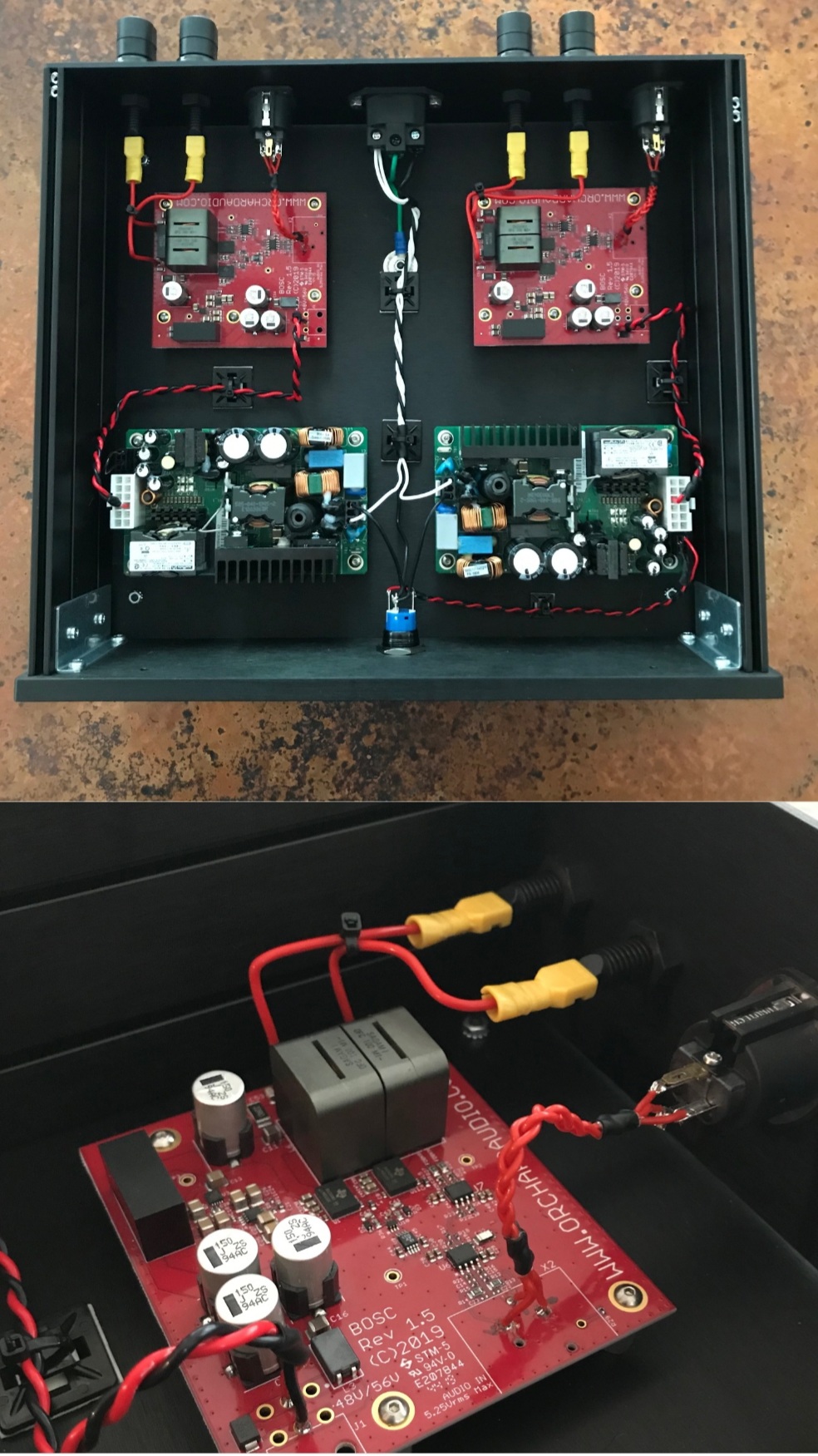
I saw you are using some AC/DC power converters (4x60W / 24VDC / 2.5A output) in this version VS SMPS PSU on the other one.
I imagine it's to make the product more accessible in terms of price?

VS
No, it's because I had it in stock. I had purchased a few of those boards a while back and I am putting it to good use. Moreover the Neurochrome SMPS-86 (discontinued) has:
*Integrated Softstart (once the output voltage of the power supply has reached 75% of the nominal output voltage, a relay trips and shorts out the thermistor. This allows the thermistor to cool, allowing the soft-start to work even during a short power outage).
*Surge capacity to 320J.
*Pi filter on output so AC ripple is 5.6mv RMS (measured).
*50mohms output impedance
In addition it has all the positive attributes of a MeanWell supply, i.e. less than 1% regulation, built in mains filters, galvanic isolation from input to output, the ability to handle a wide set of worldwide voltages on the primary, overload protection, overcurrent protection, etc...
Most SMPS supplies have a ton of ripple on the output, like 100-300mV RMS. This supply is not noisy at all. An equivalent linear supply would need very large capacitance numbers in the supply, along with a pi filter or two or capacitance multiplier circuit, along with being heavy.
That being said, it probably makes little difference since the PSRR of Leo's circuit is phenomenal and my lead lengths are very short. It's a testament to the design of the BOSC/Starkrimson circuit.
Best,
Anand.
*Integrated Softstart (once the output voltage of the power supply has reached 75% of the nominal output voltage, a relay trips and shorts out the thermistor. This allows the thermistor to cool, allowing the soft-start to work even during a short power outage).
*Surge capacity to 320J.
*Pi filter on output so AC ripple is 5.6mv RMS (measured).
*50mohms output impedance
In addition it has all the positive attributes of a MeanWell supply, i.e. less than 1% regulation, built in mains filters, galvanic isolation from input to output, the ability to handle a wide set of worldwide voltages on the primary, overload protection, overcurrent protection, etc...
Most SMPS supplies have a ton of ripple on the output, like 100-300mV RMS. This supply is not noisy at all. An equivalent linear supply would need very large capacitance numbers in the supply, along with a pi filter or two or capacitance multiplier circuit, along with being heavy.
That being said, it probably makes little difference since the PSRR of Leo's circuit is phenomenal and my lead lengths are very short. It's a testament to the design of the BOSC/Starkrimson circuit.
Best,
Anand.
Last edited:
Yes the amps have very good PSRR thanks to their fully balanced design from input to output.
The power supply that I use to do all my measurements is CUI / SDI250-56-U-P219. This power supply has 560mV of ripple on the output.
Anand will be sending me his amp to do measurements on, we will see if the lower ripple power supply has any effect.
The power supply that I use to do all my measurements is CUI / SDI250-56-U-P219. This power supply has 560mV of ripple on the output.
Anand will be sending me his amp to do measurements on, we will see if the lower ripple power supply has any effect.
Someone tried the Evaluation Infineon Merus / Gan Modules ? : I found it @ $500 shipped !
Bad gate driver))) Need special driver.
Hi,
Check out, you can find here the XRK Audio for instance, based on high end design :
RTR TPA3255 Amplificateur de reference classe D | Etsy
They are expansive that's true ! but they are far away better than any Chinese TPA32XX amp
360 Customs do not sell their finished amps.
Xrk seems not to have any finished boards for sale anymore..
So I guess I'm out of luck trying to buy a decent quality finished board.
Does anyone have a suggestion for a *semi*-decent finished TPA32XX board?
Hi all,
I'd like to present my latest class D amp build. At the core, this project was based on member xrk971's newest class D amp board. This board is based on the TI TPA3255 chipamp. The specifics of this amp can be found over at this link. The amp board is available as a bare PCB, or as completed PCB in his Esty store.
The Hardware --
The TPA3255 chip itself is mounted upside down on the underside of the board to make mounting to a chassis a good option. Of course, there are other options to raise the board, traditional heatsink, fan, etc. could be used for cooling as well. What worked well for me was to use a 130mm x 44mm x 6mm piece of aluminum stock, bolted to the chip via the PCB using thermal pad/tape to the bottom of the enclosure. The whole amp assembly secured with 6mm brass standoffs. Note: The heatsink MUST BE electrically isolated from the chassis.
For the PSU I used a Connex SMPS600RS. This is 48VDC single rail SMPS with available auxiliary voltage of +12V. The 12v was necessary for 2 additional boards I used in my build - explained next. I have excellent success using the Connex line of SMPS' over the years in several projects. Highly recommended.
The blue PCB shown attached to the back panel with XLR connectors in the upper right, is the SE to Balanced board since the amp operates natively in BTL (Bridge Tied Load) mode. This allows both balanced and unbalanced (RCA) input connectors. I recently upgraded my heavily modded ES90938Q2M DAC with Balanced outputs, so wanted that capability.
After testing on my bench, I found that the SMPS600 and the amp did not play nice together due to excessive amount of inrush current from the SMPS to the amp. A different kind of soft-start was required, since the SMPS already had a soft-start built-in. What was needed was an inrush current limiter circuit between the SMPS and amp. I contacted xrk971, and with his help, an inrush current limiter PCB was born. It will be offered in his Esty store in the future. The prototype I tested worked fine and I was able to complete the project build. Note: This appears to only be an issue with some models of SMPS' and the amp. So if you're building this amp, please try your intended SMPS first, as it may work fine. xrk971 confirmed it worked with a different model of SMPS from Connex he used for testing. So this simply may be a one-off obscure occurrence. In fact, it worked with a lower voltage/power SMPS I tried as well - without the inrush current limiter circuit being necessary. The Inrush Current Limiter circuit is powered by the SMSP auxiliary 12v output.
The Sound --
I have to say that I have build a number of class D amps, and by far this is the best sounding DIY solution I have found. The first thing I immediately noticed was how quiet this amp is. There is nothing but silence when it's turned on. Then when the music starts.... wow! While class D amps may have a 'bright' overall sound, in my listening to it over the past several weeks, I never found this amp harsh, or fatiguing to listen to in any way. Instead, the sound is smooth, full-bodied yet very articulate in executing the music with clarity and detail. With plenty of wonderful and warm sounding mids, and solid bass when called upon.
While I primarily listen to digital streaming from my home media server(roon), I also listen to LPs. One of the best, more recent LPs in my collection that is an absolute pleasure to listen to, is James Taylor's 'America Standard' Limited Edition, double 180gram, Audiophile 45RPM LP set. This is one of the best mastered LPs I've ever owned. All sides were click and pop free while being played back on my vintage turntable; JVC QL-7 using a Denon DL-103 MC cartridge. The cartridge is paired with a Puffin DSP phono preamp. The dynamics of this LP set were stunning, easily rivaling many digital tracks. James' voice is simply transformed in such a magical, and very easy to listen to way.
I continue to be amazed at how well this amp sounds and the technical execution of the music. And, did I say I haven't even tested a full balanced signal chain from my DAC to amp yet? 🙂 Next up.
A few more pictures of my amp along it's build journey.
I'd like to present my latest class D amp build. At the core, this project was based on member xrk971's newest class D amp board. This board is based on the TI TPA3255 chipamp. The specifics of this amp can be found over at this link. The amp board is available as a bare PCB, or as completed PCB in his Esty store.
The Hardware --
The TPA3255 chip itself is mounted upside down on the underside of the board to make mounting to a chassis a good option. Of course, there are other options to raise the board, traditional heatsink, fan, etc. could be used for cooling as well. What worked well for me was to use a 130mm x 44mm x 6mm piece of aluminum stock, bolted to the chip via the PCB using thermal pad/tape to the bottom of the enclosure. The whole amp assembly secured with 6mm brass standoffs. Note: The heatsink MUST BE electrically isolated from the chassis.
For the PSU I used a Connex SMPS600RS. This is 48VDC single rail SMPS with available auxiliary voltage of +12V. The 12v was necessary for 2 additional boards I used in my build - explained next. I have excellent success using the Connex line of SMPS' over the years in several projects. Highly recommended.
The blue PCB shown attached to the back panel with XLR connectors in the upper right, is the SE to Balanced board since the amp operates natively in BTL (Bridge Tied Load) mode. This allows both balanced and unbalanced (RCA) input connectors. I recently upgraded my heavily modded ES90938Q2M DAC with Balanced outputs, so wanted that capability.
After testing on my bench, I found that the SMPS600 and the amp did not play nice together due to excessive amount of inrush current from the SMPS to the amp. A different kind of soft-start was required, since the SMPS already had a soft-start built-in. What was needed was an inrush current limiter circuit between the SMPS and amp. I contacted xrk971, and with his help, an inrush current limiter PCB was born. It will be offered in his Esty store in the future. The prototype I tested worked fine and I was able to complete the project build. Note: This appears to only be an issue with some models of SMPS' and the amp. So if you're building this amp, please try your intended SMPS first, as it may work fine. xrk971 confirmed it worked with a different model of SMPS from Connex he used for testing. So this simply may be a one-off obscure occurrence. In fact, it worked with a lower voltage/power SMPS I tried as well - without the inrush current limiter circuit being necessary. The Inrush Current Limiter circuit is powered by the SMSP auxiliary 12v output.
The Sound --
I have to say that I have build a number of class D amps, and by far this is the best sounding DIY solution I have found. The first thing I immediately noticed was how quiet this amp is. There is nothing but silence when it's turned on. Then when the music starts.... wow! While class D amps may have a 'bright' overall sound, in my listening to it over the past several weeks, I never found this amp harsh, or fatiguing to listen to in any way. Instead, the sound is smooth, full-bodied yet very articulate in executing the music with clarity and detail. With plenty of wonderful and warm sounding mids, and solid bass when called upon.
While I primarily listen to digital streaming from my home media server(roon), I also listen to LPs. One of the best, more recent LPs in my collection that is an absolute pleasure to listen to, is James Taylor's 'America Standard' Limited Edition, double 180gram, Audiophile 45RPM LP set. This is one of the best mastered LPs I've ever owned. All sides were click and pop free while being played back on my vintage turntable; JVC QL-7 using a Denon DL-103 MC cartridge. The cartridge is paired with a Puffin DSP phono preamp. The dynamics of this LP set were stunning, easily rivaling many digital tracks. James' voice is simply transformed in such a magical, and very easy to listen to way.
I continue to be amazed at how well this amp sounds and the technical execution of the music. And, did I say I haven't even tested a full balanced signal chain from my DAC to amp yet? 🙂 Next up.
A few more pictures of my amp along it's build journey.
Attachments
-
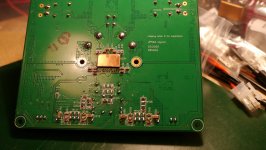 P1020166.jpg519.6 KB · Views: 784
P1020166.jpg519.6 KB · Views: 784 -
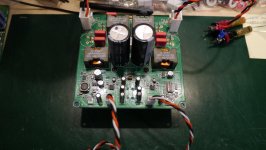 P1020172.jpg435.8 KB · Views: 628
P1020172.jpg435.8 KB · Views: 628 -
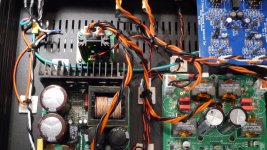 P1020301.jpg1 MB · Views: 632
P1020301.jpg1 MB · Views: 632 -
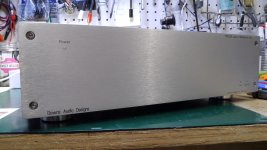 P1020260.jpg929.8 KB · Views: 572
P1020260.jpg929.8 KB · Views: 572 -
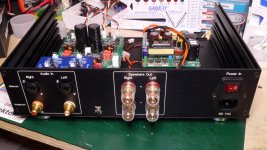 P1020239.jpg910.5 KB · Views: 23,359
P1020239.jpg910.5 KB · Views: 23,359 -
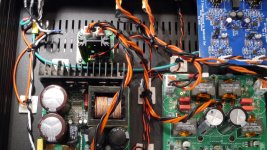 P1020300.jpg1 MB · Views: 4,132
P1020300.jpg1 MB · Views: 4,132 -
 P1020253.jpg980.3 KB · Views: 434
P1020253.jpg980.3 KB · Views: 434 -
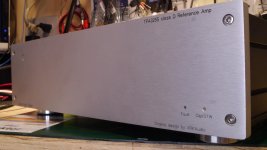 P1020268.jpg815.2 KB · Views: 22,655
P1020268.jpg815.2 KB · Views: 22,655 -
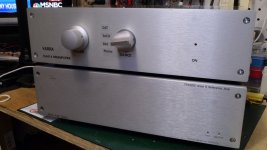 P1020283.jpg838.1 KB · Views: 367
P1020283.jpg838.1 KB · Views: 367
Best "chinese" board = 3E Audio or Aiyima 3251 (Tilear PCB) with OPA1656
Another alternative (but non PFFB enabled) :
jlelectronicsph on eBay
✅ Transient voltage protection (SCR + TVS + Fuse)
✅ Oversized Zobel Network
✅ Linear post regulator
✅ Voltage supervisor (no startup/shutdown pops)
✅ Nichicon muse input caps
✅ OPA1656
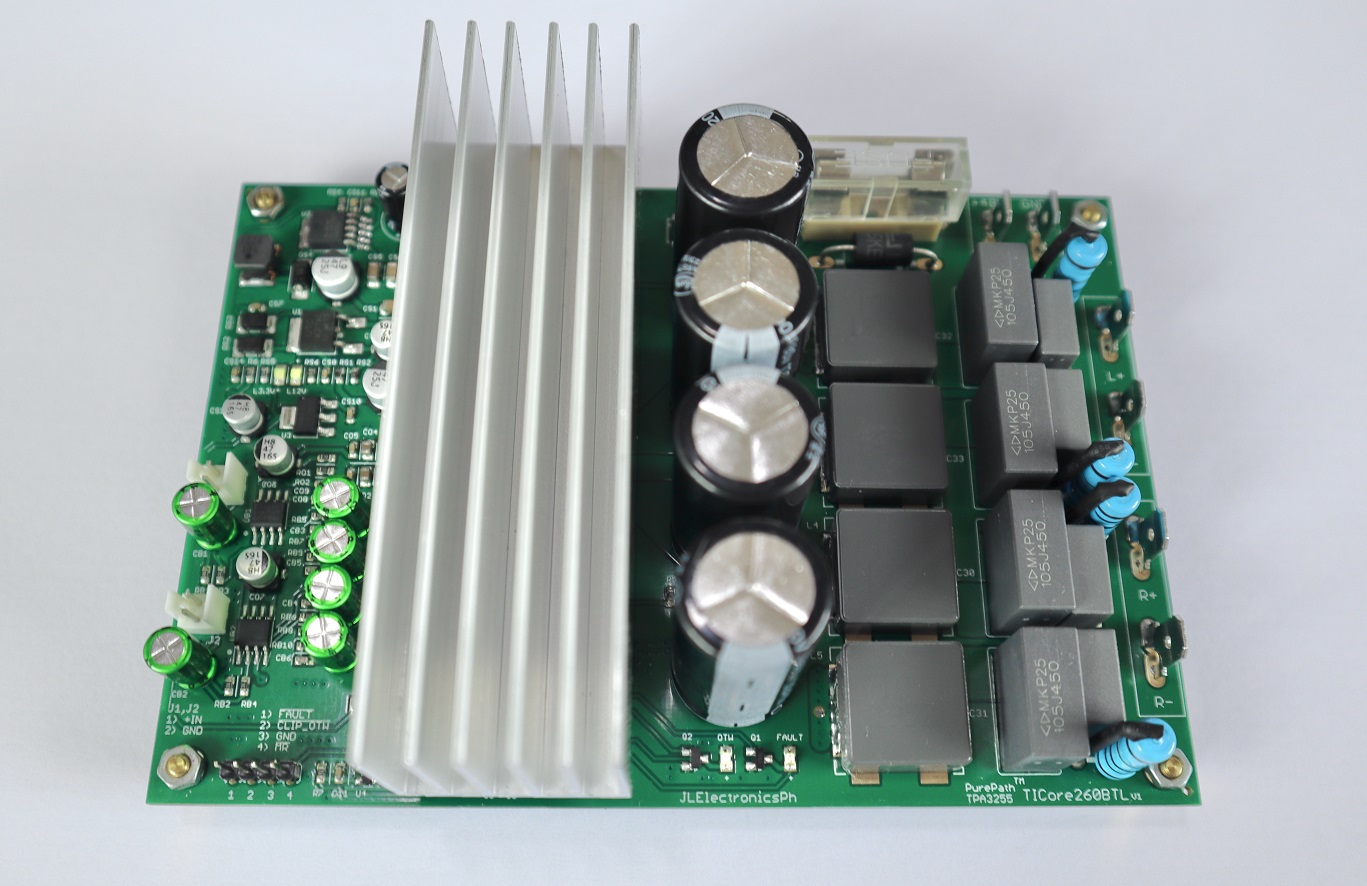
Another alternative (but non PFFB enabled) :
jlelectronicsph on eBay
✅ Transient voltage protection (SCR + TVS + Fuse)
✅ Oversized Zobel Network
✅ Linear post regulator
✅ Voltage supervisor (no startup/shutdown pops)
✅ Nichicon muse input caps
✅ OPA1656
Last edited:
Hi all,
I'd like to present my latest class D amp build. At the core, this project was based on member xrk971's newest class D amp board. This board is based on the TI TPA3255 chipamp. The specifics of this amp can be found over at this link. The amp board is available as a bare PCB, or as completed PCB in his Esty store. ................
.
Nice build ! XRK boards are great and sound amazing
Nice case as well 🙂 Did you buy it or DIY enclosure ?
Enjoy music )
- Home
- Amplifiers
- Class D
- Class D Amp Photo Gallery


